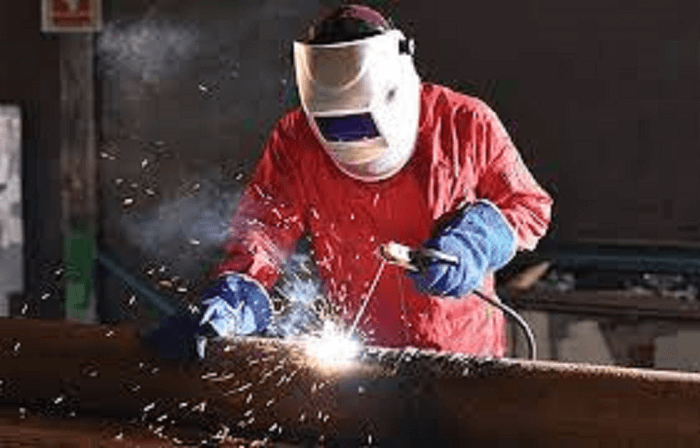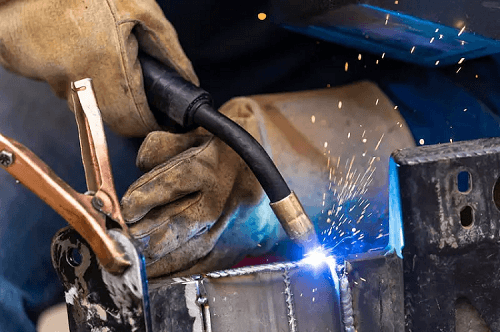Advantages and Disadvantages of WeldingImagine that a rod in your home's grill has corrupted or that the weather has caused damage to a portion of the entrance gate. How will you proceed? Will you completely replace the gate or grill? Instead of replacing the entire structure, wouldn't it be wiser to replace the damaged metal grill or gate component with a fresh piece of metal? This is the circumstance where the welding procedure is relevant. On every street in the neighborhood, we notice fabrication businesses. Have you ever given what they do any thought? Yes, you're correct. They weld metal. By melting the base metal and the filler metal, welding aids in connecting two metals at a high temperature. In this essay, we will learn more about welding, its different varieties, benefits, and drawbacks. 
Why Do People Weld?

Welding TechniquesNumerous welding techniques are utilized for diverse tasks in various contexts. As follows: Manual welding consists of the following:
1. To Forge WeldThe earliest form of welding, known as forge welding, combined small iron bits to create more valuable, larger pieces. It is the most basic form of welding in which two metals are heated, connected, and then hammered for finishing. 2. Weld in an ArcThe most prevalent type of welding used nowadays is arc welding. A type of welding called arc welding uses an electric arc to heat and connect metals. The metal electrode transfers tiny globules of molten metal to the weld joint. 3. Ozone WeldingGas welding, oxy acetylene welding, and oxy welding are all terms for oxyfuel welding. This procedure burns fuel gases like acetylene and oxygen to weld or cuts the metals. Oxyfuel welding was created in 1903 by French engineers Edmond Fouché and Charles Picard. When acetylene and oxygen are combined in the right proportions inside a blowpipe or hand-held torch, a hot flame reaches a temperature of 3,200 degrees Celsius. The flame's intensity can be changed by adjusting the volume ratio of oxygen to acetylene. This flame can be used to weld. 4. Metal arc Shield WeldingShielded metal arc welding is also referred to by several other names, including flux-shielded arc welding, manual metal arc welding, and stick welding. An electrode covered in flux is used in the hand-welding process. An electric arc is created by an AC or DC power source between the electrode and the metals that need to be connected. 5. Arc Gas Metal WeldingGas metal arc welding creates an electric arc between the workpiece metal and an electrode made of a consumable metal inert gas. The metal workpiece is melted by the heat produced and then connected. It is an automated or semi-automated process that draws AC or DC power from the power source. 6. Aquatic Arc WeldingA procedure for creating an arc between the electrode and the workpiece is known as submerged arc welding. On the piece of work, an arc is protected by a layer of granular fusible substance. 7. Arc Flux-Cored WeldingA semi-automated or automatic arc welding procedure is flux-cored arc welding. The procedure of flux-cored arc welding is comparable to metal active gas welding. It uses a constant-voltage welding power supply and a continuous wire feed electrode. 8. Welding with Electro SlagThe best welding method for joining materials larger than 25 mm and up to roughly 300 mm is electro-slag welding. Heat is produced during electro-slag welding by conducting electricity through molten slag that covers the weld surface between the workpiece and the filler metal. 9. Using a Laser to WeldThe process of joining metal or thermoplastic materials together using laser beams is known as laser beam welding (Light Amplification by Stimulated Emission of Radiation). It is an effective method for making deep welds. As a non-contact procedure, laser beam welding needs access to the weld zone from one side of the welded parts. The monochromatic, single-phased, divergence-free nature of the LASER beam allows for channeling the high-energy light produced for welding. 10. Atomic Beam WeldingHigh-velocity electrons fuse the materials in the electron beam welding process. A vacuum is used when welding with electron beams to prevent electron beam dissipation. The kinetic energy of the electrons is transformed, which causes the materials to fuse. The direction of the flow of electrons is controlled by the electron gun, which generates electrons. To avoid electron scattering, electron beam welding is performed in a vacuum atmosphere. 11. Weld using magnetic pulsesMagnetic force is used in magnetic pulse welding to join two materials. It is a form of solid-state welding created in 1970 and is widely employed in the automobile sector. It is the quickest welding method and requires neither shielding gases nor welding consumables, taking only a few microseconds. 12. Mechanical Stir WeldingAnother solid-state welding method that uses frictional heat produced by a revolving tool to fuse materials is called friction stir welding. The tool, which has a shoulder and contoured probe, is rotated and inserted into the joint between two workpieces. The material heats up and softens when the tool is moved along the joint line. This plasticized material, which is mechanically combined to form a solid phase weld, is likewise contained by the shoulder. Advantages of Welding
Disadvantages of Welding
The ConclusionIn conclusion, Greater effectiveness, quality, productivity, and finish are ensured by advanced welding automation. A growing sector, notably arc welding, has been created by welding methods that have enhanced several regions. |
 For Videos Join Our Youtube Channel: Join Now
For Videos Join Our Youtube Channel: Join Now
Feedback
- Send your Feedback to [email protected]
Help Others, Please Share










